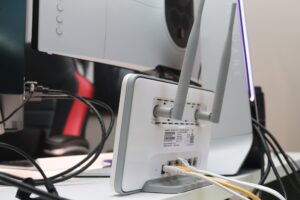
Telemetry Data and End User Experience

Do you have engaged, productive employees? Are you sure? Exactly how engaged and how productive are they? Could productivity be better? How?
If you don’t know the answers to these questions, you’re missing out on valuable data. End-user experience monitoring – if used correctly – can deliver rich business insights that not only give context to stats and facts gathered from applications and surveys, but also give businesses specific, concrete ways to improve.
Why you should use telemetry solutions for your end-user data
Telemetry is the automatic collection and transmission of data from remote or otherwise inaccessible sources to systems in other locations for analysis. This makes telemetry solutions ideal for collecting data from anything used by end-users over the course of their job: devices, apps, servers, networks, etc.
While IT professionals can’t follow end-users around, hovering over shoulders and taking notes nonstop, they can review data that is collected unobtrusively by technology. In fact, some telemetry solutions will go a step further and send automatic alerts after data analysis, so that IT teams no longer have to spend valuable time reviewing and analyzing data themselves.
Benefits
Here are a few ways that telemetry data and analytics can simplify and improve efficiency and optimization processes:
- The automatic collection of all-encompassing data, straight from the source, in real-time, ensures that IT knows exactly what end users are experiencing and why, without having to depend on user reporting and surveys
- Use it to discover what software features employees actually use, and how often they use it – this might mean you stick with software you have, decide to try something new, or keep what you have but pay for fewer licenses
- Real-time insights mean that issues can be identified and resolved faster, often before end users are affected, improving productivity
- Share reports and data with vendors so that they can see how their products work in the real world and how they can best be improved to better support efficiency
How to start
If telemetry solutions are new to you, you can use these guidelines to get started gathering end-user experience data:
- The first thing you want to do is define your business goals and then determine what end user metrics you need to support those goals. While we recommend gathering data from as many sources as possible – a granular picture can help one employee, but a company-wide picture can help with overall productivity and brand growth – it might not be feasible for your business to start with a “Gather Everything” approach. Defining your goals will help you strategically build out telemetry capabilities for the best ROI.
As part of this process, you need to decide if you want to focus on employee devices, customer-facing applications, or both.
- Tell employees what you are doing and why. If employees aren’t told why specific user data is being collected while they work, they might think their organization is spying on them, doesn’t trust them, or have another negative reaction. Take the time to let everyone know what data is being gathered and what isn’t (i.e. nothing personally identifying), and why. Employees will benefit from the insights data provides. Make sure they know this.
- Start building out your capabilities.
What to look for
There are a number of solutions available. These are our feature recommendations:
Operational 24/7
To get the best insights, you need data pulled anytime that employees are working and/or customers are using your system. Any lost data is a lost chance to understand the end user experience and how that is impacting your business as a whole.
Real-Time, Proactive Insights
Keep in mind that not all telemetry solutions are all-inclusive. Some of them might only collect data, and then will rely on another system to analyze that data and transform it into actionable insights. Some companies will prefer to look for an all-in-one offering to simplify the process, while others might decide that isn’t as important to them.
Either way, be sure that you are getting comprehensive insights and alerts delivered in as near to real-time as possible. This makes it possible for IT to respond proactively to alerts and other issues.
Automatic
While automatic data retrieval is part of the telemetry definition, make sure that analytics are also delivered automatically. If IT has to manually pull analytics, you won’t see as great a reduction in issues and resolution times.
Root Cause Analysis
Rather than working with a solution that simply identifies problems, we recommend finding one that also provides root cause analysis. This enables IT to jump straight to resolutions, rather than requiring them to sift through data packets on their own in order to find the root cause of a problem.
Remotely Accessible
Our final tip: make sure that IT professionals can remotely access the telemetry solution. For the best ROI, you’ll want IT to be able to troubleshoot any issues with the solution – as well as troubleshoot issues identified by the solution – from any location at any time.
Additional Resources
For information on application and network telemetry, check out, The Importance of Telemetry for Businesses that Run on Data and Best Practices for WiFi Network Telemetry.


